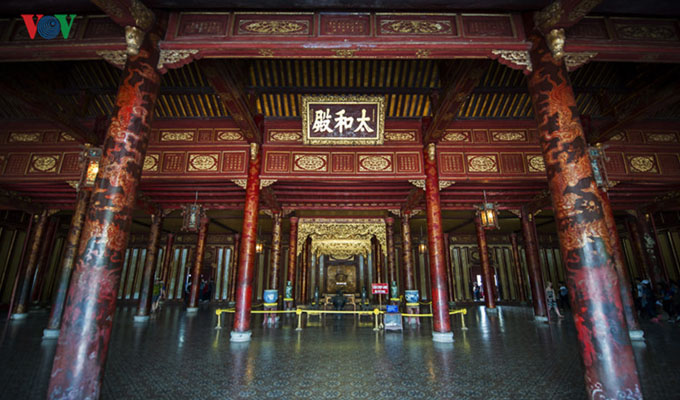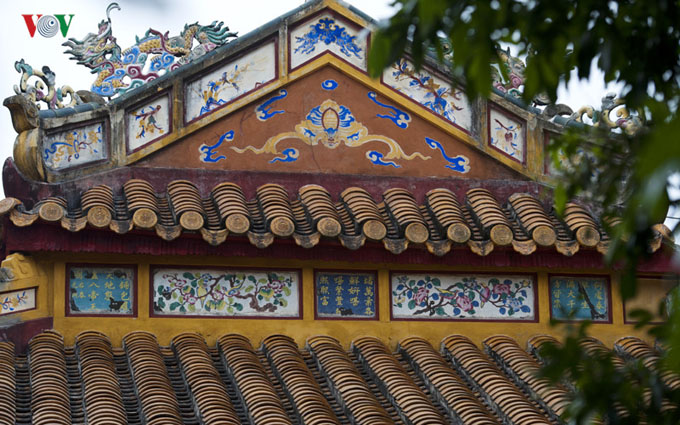(TITC) - Royal Literature on Hue Royal Architecture consists of the system of verses and characters in Han scripts carved, inlaid, encrusted, enamelled or covered in alto-relievo with plaster, porcelain and terra-cotta on Hue royal architecture relics under Nguyen Dynasty (1802 – 1945). This is documentary heritage item reflecting the thoughts of Nguyen Dynasty’s kings on history, national independence, culture, and country governance.

(Photo: VOV)
Being mainly famous works of Nguyen Dynasty’s kings, the Royal Literature on Hue Royal Architecture expresses many different contents such as confirming the national
independence and the sovereignty of the country, reflecting some policies of the court, singing the praises of grass and trees, flowers and leaves, and holding up the poets’ talent. The verses are mostly five-word or seven-word; the parallel sentences are diversified and non-fixed number of letters; characters have fine meanings.
The verses and characters are decorative styles “one verse, one picture” or “one character, one picture”. They are expressed in the form of one verse panel with one picture panel or one character panel with one picture panel creating a unique style of Hue royal architectural decoration.
The decorative pictures are also diversified with the themes of eight treasures (bat bao), four moments or four seasons (tu thoi or tu quy). In addition, there are also landscape paintings and ancient maps, etc. The position of the verses and pictures are mainly on gables, beams or edges of architectural works. The calligraphy and arrangement of the verses are extremely diversified with four scripts of regular (chan), cursive (thao), seal (trien) and clerical (le). Typically, the two verses in Long An Palace are even arranged in pa kua shape so that each verse just comprises 56 words, but can be interpreted as 64 different verses. Depending on the materials (wood, bronze, stone, concrete, etc), the ancient craftsmen chose skilfully appropriate colours and alto-relievo to stand out the verses and pictures.
The number of stored royal literature on Hue royal architecture is quite plentiful with 2,997 literature panels on wood architectures, 142 ones on enamelled bronze architectures, and 88 ones on concrete, brick, and stone architectures.

(Photo: VOV)
Outstanding values
Rarity
Not only as a particular style of royal architectural decoration which has not seen in anywhere in the world, royal literature on Hue royal architecture is a unique and living museum on Nguyen Dynasty’s literature. It conveys unique historical, cultural and artistic messages about a period of Viet Nam’s history. This is a huge historical documentary heritage item that contains many precious values in need of safeguarding.
Uniqueness
Royal Literature on Hue Royal Architecture is the only origins (in the form of positive) which have no change or renewal in the Complex of Hue Monuments.
World significance
Composed in Han scripts - a former commonly script of the countries influenced by Chinese culture (China, Japan, North Korea, South Korea, Viet Nam), so Royal Literature on Hue Royal Architecture has high internationality and popularity. In the past, the envoys of these countries could easily read and comprehended its meaning when coming to Hue.
With the outstanding values, on 19 May 2016, in the framework of the 7th General Meeting of the Memory of the World Committee for Asia and the Pacific (MOWCAP) held in Hue City, Thua Thien – Hue Province, Royal Literature on Hue Royal Architecture has been recognized by UNESCO as Documentary Heritage in the Memory of the World Programme in the Asia/Pacific region.
Thu Giang